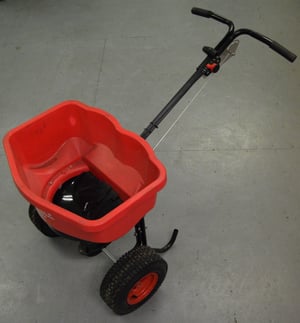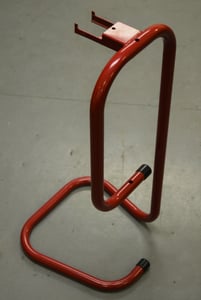
It's OK to not have all the answers when you approach a metal manufacturer with a job. But it'll sure make you look smarter.
"Steel tube services" can mean a lot of different things. For one, a tube can come in many materials and shapes, and things only get crazier from there.
Treat this as a little pop quiz before your next tubing project.
Steel Tube Services FAQs
Like any metal manufacturing services, tube bending and fabrication have a lot of complexities. Here are the top eight things you should know about these hollow little rascals:
- The difference between steel tube and pipe
- The difference between seamless and welded steel tube
- When to use aluminum vs. steel tubing
- Ideal applications for steel tubing
- What type of tube is best for corrosion protection
- The best finishes for steel tubing
- Fabrication options
- Available steel tube shapes
1. What's the difference between steel pipe and Tube?
The words "tube" and "pipe" have become almost interchangeable. However, there are two major differences.
1. Pipe is measured by schedule and nominal inside diameter. Tube is measured by outer diameter (OD) and has exact wall thickness measurements. Why? Because...
2. Typically, pipes are used for fluid transport. The inner diameter indicates how much fluid a pipe can hold, which is the most important measurement. Tubing is more structural. Steel tubing applications require exact OD and wall thickness to determine fit and strength.
2. What's the difference between seamless and welded steel tubing?
Welded steel tubing is produced from a coil of steel (or other metal). The coil is rolled, welded, and cut to meet the client's specifications. Welded steel tubing is much more common today for a few reasons:
- The cost of forming coiled metal is much cheaper than seamless tube extrusion
- Welded tube production is much quicker
- Modern welding techniques mean welded tubing is equivalent in strength & durability to seamless tubing
You can see the process in action above.
On the other hand, seamless tubing is produced by extrusion. Even though it's more expensive, many people prefer seamless tubing because they believe it's stronger than welded tubing. With modern welding technology, this is no longer the case.
3. What's the difference between aluminum and steel tubing?
Aluminum tubing and steel tubing both have their uses. Aluminum tubing tends to be shinier, more ductile, and lighter than steel. It's commonly used in lightweight applications.
Steel tubing is stronger, more durable, and more resistant to stress. It's typically used in structural applications such as bridge support and framing.

4. What applications work best for steel tubing?
Mechanical steel tube works best in stressful, corrosive applications. Both galvanized steel and stainless steel are popular for outdoor use. They're preferred in construction equipment, manufacturing machinery, commercial tools, and infrastructure.
However, stainless steel is also popular for surgical tools, consumer goods, and lawn and garden items.
5. Can I use steel tubing in corrosive environments?
Yes! ... But, preferably stainless steel tubing. There are certain stainless steel alloys that do best in these environments (304 and 316 are most common), but overall, steel is an incredibly durable material. It's hardy, strong, and doesn't need as much maintenance as other metals.

6. What are the best finishes for Tube Fabrication?
Realistically, you can coat your tubing however you want. But we recommend either galvanization or powder coating. Both of these finishes are durable, and offer an additional layer of protection. They also look great!
Some stainless steels don't require a finish due to their high chromium content (shiny & corrosion resistant). But if you would like a certain color, we suggest powder coating instead of painting.
7. What are the fabrication Services Available for steel tubing?
Steel tubing can be fabricated in many ways! Here are a few from the list:
- Bending
- Welding
- Punching
- Stamping
- Drilling
- Cutting
Basically, if you need fabricated tubing, steel is a great choice.
8. What steel tube shapes Are Out There?
The sky is the limit. Standard shapes include:
- Round
- Oval
- Square
- Rectangular
- D-shaped
But we're happy to produce triangles, stars, hexagons -- whatever makes you happy!
(Editor's note: This article was originally published in September 2016 and was recently updated.)


